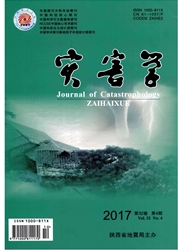

 中文摘要:
中文摘要:
洪水灾害风险区划是洪水风险管理的基本依据.长期以来,受数据收集以及分辨率的影响,中国一直缺乏可以指导相关部门进行洪水风险控制及洪水保险的洪灾风险区划.本文利用地理信息系统软件的空间分析模块,基于高分辨率(90m)的全国降雨、地形坡度、河流湖泊缓冲区、人均GDP、人口密度、道路密度和耕地密度等影响水灾发生的风险因子图,采用水灾成因分析法和经验系数法,得到洪水的潜在危险区和经济易损区,进而得到中国洪水灾害风险区划.在此基础上,采用逐步回归法,逐步剔除各影响因子后,对引发洪灾的主要外在驱动力进行了分析.
 英文摘要:
英文摘要:
Flood risk zoning is the base of the flood risk management. Because of difficulty in obtaining data, or low resolution of data, for a long time, the flood risk zoning which can guide flood control and flood insurance is unavailable. A new method is adopted to solve this problem, with the help of the GIS software and high resolution picture (90m) of rain, flood-related slope, buffer of the lake and river, average GDP, density of the population, road and farming land. Based on flood causal analysis and empiristic coefficient, potential flood zones and vulnerability of socio-economy are obtained and also the flood risk zoning in China is made. With the method of stepwise regression, by eliminating the influential factors, the main extrinsic driving forces that cause flood are analyzed.
 同期刊论文项目
同期刊论文项目
 同项目期刊论文
同项目期刊论文
 期刊信息
期刊信息
